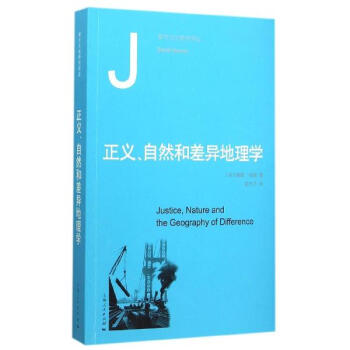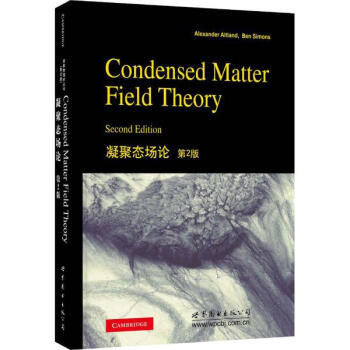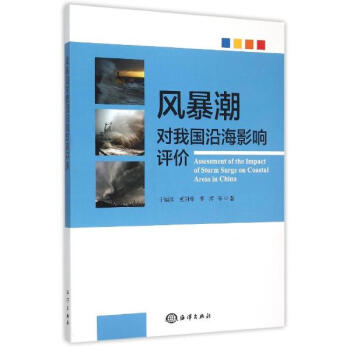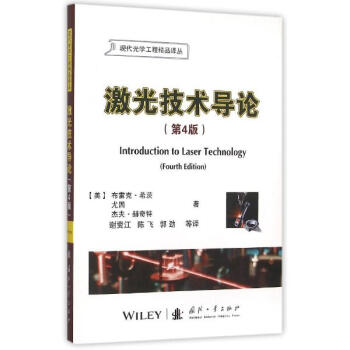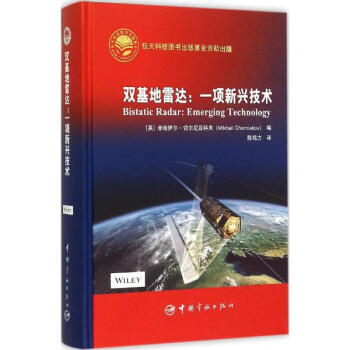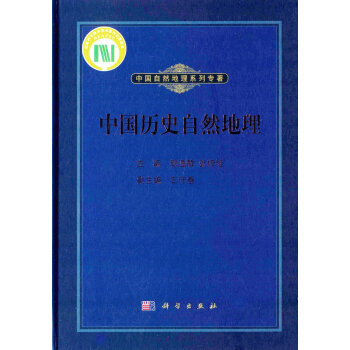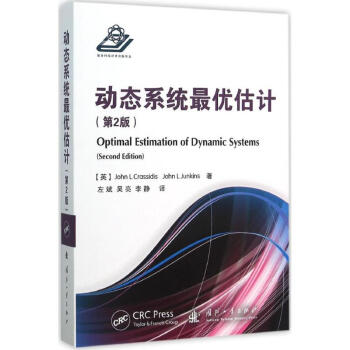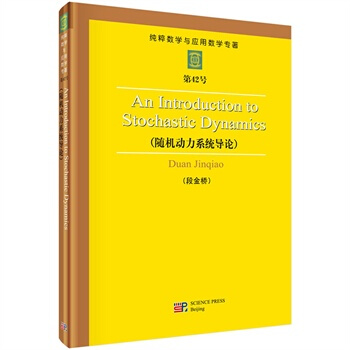

具体描述
基本信息
书名:随机动力系统导论(英文)
作者:段金桥
出版社:科学出版社
出版日期:2015-04-01
ISBN:9787030438577
字数:373000
页码:300
版次:1
装帧:精装
开本:16开
商品重量:0.4kg
编辑推荐
暂无
内容提要
随机动力系统是一个入门较难的新兴领域。段金 桥、杨乐编著的《随机动力系统导论(英文版)(精)/ 纯粹数学与应用数学专著》是这个领域的一个较为通 俗易懂的引论。在本书的第一部分,作者从简单的随 机动力系统实际例子出发,引导读者回顾概率论和白 噪声的基本知识,深入浅出地介绍随机微积分,然后 自然地展开随机微分方程的讨论。
目录
Chapter 1 Introduction
1.1 Examples of deterministic dynamical systems
1.2 Examples of stochastic dynamical systems
1.3 Mathematical modeling with stochastic differential equations
1.4 Outline of this book
1.5 Problems
Chapter 2 Background in Analysis and Probability
2.1 Euclidean space
2.2 Hilbert, Banach and metric spaces
2.3 Taylor expansions
2.4 Improper integrals and Cauchy principal values
2.5 Some useful inequalities
2.5.1 Young's inequality
2.5.2 Cronwall inequality
2.5.3 Cauchy-Schwaxz inequality
2.5.4 HSlder inequality
2.5.5 Minkowski inequality
2.6 HSlder spaces, Sobolev spaces and related inequalities
2.7 Probability spaces
2.7.1 Scalar random variables
2.7.2 Random vectors
2.7.3 Gaussian random variables
2.7.4 Non-Gaussian random variables
2.8 Stochastic processes
2.9 Coovergence concepts
2.10 Simulation
2.11 Problems
Chapter 3 Noise
3.1 Brownian motion
3.1.1 Brownian motion in R1
3.1.2 Brownian motion in Rn~
3.2 What is Gaussian white noise
3.3* A mathematical model for Gaussian white noise
3.3.1 Generalized derivatives
3.3.2 Gaussian white noise
3.4 Simulation
3.5 Problems
Chapter 4 A Crash Course in Stochastic Differential Equations
4.1 Differential equations with noise
4.2 Riemann-Stieltjes integration
4.3 Stochastic integration and stochastic differential equations
4.3.1 Motivation
4.3.2 Definition of It5 integral
4.3.3 Practical calculations
4.3.4 Stratonovich integral
4.3.5 Examples
4.3.6 Properties of It6 integrals
4.3.7 Stochastic differential equations
4.3.8 SDEs in engineering and science literature
4.3.9 SDEs with two-sided Brownian motions
4.4 It6's formula
4.4.1 Motivation for stochasticChain rules
4.4.2 ItS's formula in scalar case
4.4.3 It6's formula in vector case
4.4.4 Stochastic product rule and integration by parts
4.5 Linear stochastic differential equations
4.6 Nonlinear stochastic differential equations
4.6.1 Existence, uniqueness and smoothness
4.6.2 Probability measure px and expectation Ex associated with an SDE
4.7 Conversion between It5 and Stratonovich stochastic differential
equations
4.7.1 Scalar SDEs
4.7.2 SDE systems
4.8 Impact of noise on dynamics
4.9 Simulation
4.10 Problems
Chapter 5 Deterministic Quantities for Stochastic Dynamics
5.1 Moments
5.2 Probability density functions
5.2.1 Scalar Fokker-Planck equations
5.2.2 Multidimensional Fokker-Planck equations
5.2.3 Existence and uniqueness for Fokker-Planck equations
5.2.4 Likelihood for transitions between different dynamical regimes under
uncertainty
5.3 Most probable phase portraits
5.3.1 Mean phase portraits
5.3.2 Almost sure phase portraits
5.3.3 Most probable phase portraits
5.4 Mean exit time
5.5 Escape probability
5.6 Problems
Chapter 6 Invariant Structures for Stochastic Dynamics
6.1 Deterministic dynamical systems
6.1.1 Concepts for deterministic dynamical systems
6.1.2 The Haxtman-Grobman theorem
6.1.3 Invariant sets
6.1.4 Differentiable manifolds
6.1.5 Deterministic invariant manifolds
6.2 Measurable dynamical systems
6.3 Random dynamical systems
6.3.1 Canonical sample spaces for SDEs
6.3.2 Wiener shift
6.3.3 Cocycles and random dynamical systems
6.3.4 Examples of cocycles
6.3.5 Structural stability and stationary orbits
6.4 Linear stochastic dynamics
6.4.1 Oseledets' multiplicative ergodic theorem and Lyapunov exponents'
6.4.2 A stochastic Hartman-Grobman theorem
6.5* Random invariant manifolds
6.5.1 Definition of random invariant manifolds
6.5.2 Converting SDEs to RDEs
6.5.3 Local random pseudo-stable and pseudo-unstable manifolds
6.5.4 Local random stable, unstable and center manifolds
6.6 Problems
Chapter 7 Dynamical Systems Driven by Non-Gaussian Levy
Motions
7.1 Modeling via stochastic differential equations with Levy motions
7.2 Levy motions
7.2.1 Functions that have one-side limits
7.2.2 Levy-Ito deposition
7.2.3 Levy-Khintchine formula
7.2.4 Basic properties of Levy motions
7.3 s-stable Levy motions
7.3.1 Stable random variables
7.3.2 a-stable Levy motions in R1
7.3.3 a-stable Levy motion in Rn
7.4 Stochastic differential equations with Levy motions
7.4.1 Stochastic integration with respect to Levy motions
7.4.2 SDEs with Levy motions
7.4.3 Generators for SDEs with Levy motion
7.5 Mean exit time
7.5.1 Mean exit time for a-stable Levy motion
7.5.2 Mean exit time for SDEs with a-stable Levy motion
7.6 Escape probability and transition phenomena
7.6.1 Balayage-Dirichlet problem for escape probability
7.6.2 Escape probability for a-stable Levy motion
7.6.3 Escape probability for SDEs with a-stable Levy motion
7.7 Fokker-Planck equations
7.7.1 Fokker-Planck equations in R1
7.7.2 Fokker-Planck equations in Rn
7.8 Problems
Hints and Solutions
Further Readings
References
Index
Color Pictures
作者介绍
暂无
文摘
暂无
序言
暂无
用户评价
我注意到这本书在处理一些前沿课题时,展现出了超越传统教材的视野。例如,它对随机系统在非平衡态下的某些临界现象的探讨,其深度和广度已经触及了当前研究的前沿。这使得它在作为教材的同时,也具备了优秀的研究参考书的潜力。我特别欣赏作者在引入新概念时,总是先给出一个直观的、可感知的物理或工程背景,然后再用数学语言进行精确刻画。这种“由表及里”的教学法,非常有效地避免了读者陷入“知其然不知其所以然”的困境。对于那些已经掌握了确定性动力学基础,希望向随机化方向拓展的研究人员来说,这本书无疑是一座功能完备的桥梁,它提供的工具集是如此强大和通用,足以支撑起未来多年的独立研究工作。
评分我对这本书的阅读体验可以用“醍醐灌顶”来形容。我之前接触过一些关于动力系统的入门材料,总感觉在“随机”与“确定性”的交界处存在一道难以逾越的鸿沟,那些描述总显得有些飘忽不定。然而,这本书仿佛提供了一把精密的尺子,让我能够精确地丈量和理解这种内在的不确定性是如何在系统演化中扮演核心角色的。特别是关于Lyapunov指数在随机环境下的讨论,作者的处理方式非常新颖,它不再是单一的确定性数值,而是变成了一个分布,这彻底颠覆了我以往的认知框架。我花了整整一个下午来消化其中关于随机扰动下系统稳定性的那几章,那种豁然开朗的感觉,是很多其他同类书籍都未能给予的。它的深度足以让研究生级别的读者进行深入研究,但其基础部分的叙述又足够友好,让有志于跨界学习的工科背景人士也能快速跟上节奏。
评分这本书的排版和印刷质量达到了令人赞叹的专业水准。在处理大量的数学公式时,清晰度至关重要,而这本教材在这方面做得无可挑剔。公式的对齐、下标的上标处理,以及不同数学对象的区分,都做得非常精细,这极大地减少了阅读过程中的认知负担——你不需要花时间去猜测哪个符号是哪个变量。此外,书中穿插的那些历史背景介绍和对关键概念起源的简要回顾,虽然篇幅不长,却极大地增强了阅读的趣味性。它不仅仅是一本干巴巴的公式集,更像是一位资深学者在与你进行一场高层次的学术对话,他不仅告诉你“是什么”,更会探究“为什么是这样”。这种将历史脉络与现代理论相结合的叙事手法,让人对随机动力学这门学科产生了更深厚的情感联结。
评分坦率地说,这本书的阅读门槛是偏高的,但绝对是物有所值的投入。我不是一个数学专业的学生,最初尝试阅读时,确实在某些涉及测度论和泛函分析的章节上碰壁了。但是,当我耐下心,结合书后提供的参考阅读材料,并对照着书中的例题一步步演算时,那些看似晦涩的符号开始变得有血有肉起来。作者的叙述风格极其严谨,每一个定理的证明都力求无懈可击,这对于追求精确性的读者来说是极大的福音。它不会为了迎合初学者而牺牲数学的严密性,这使得它成为了一本可以长期珍藏和反复研读的工具书。每一次重读,我都能从中发现之前忽略的细节或更深层次的联系,这表明其内容的密度和广度是相当惊人的。对于任何希望将随机性分析工具应用于金融工程、物理建模或生物系统模拟的人来说,这本书无疑是绕不开的一座丰碑。
评分这本书的封面设计给我一种非常严谨、学术的感觉,设计风格简洁明了,但又不失专业性。那种略带磨砂质感的纸张,拿在手里沉甸甸的,让人立刻意识到这是一本内容扎实、经过深思熟虑的著作。我尤其欣赏封面上字体排版的选择,既有古典的庄重感,又融入了现代数学的清晰逻辑。初次翻阅时,那些清晰的图表和流畅的数学推导步骤,一下子就抓住了我的注意力。它不像有些教科书那样堆砌公式,而是巧妙地将复杂的概念可视化,让初学者也能窥见随机性背后的秩序之美。不得不说,作者在内容的组织上花费了大量心血,从基础的概率论概念到高阶的随机微分方程,过渡自然得仿佛在讲述一个连贯的故事,而不是简单地罗列知识点。这本教材的价值,很大程度上体现在它如何引导读者建立起对随机过程的直觉理解,而不是仅仅停留在符号操作层面。
相关图书
本站所有内容均为互联网搜索引擎提供的公开搜索信息,本站不存储任何数据与内容,任何内容与数据均与本站无关,如有需要请联系相关搜索引擎包括但不限于百度,google,bing,sogou 等
© 2025 book.idnshop.cc All Rights Reserved. 静思书屋 版权所有

